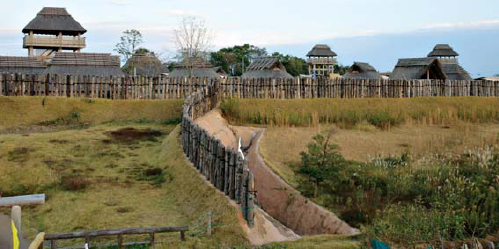
| AD 297 | Japanese fortifications are described in the Wei Zhi |
| AD 369 | Traditional date when Japanese colony of Mimana established in Korea |
| AD 618 | First reference to ōyumi (siege crossbows) |
| AD 645 | Taika Reform |
| AD 663 | Japanese forces defeated at the battle of the Baekcheon River |
| AD 664 | Mizuki ‘water castle’ is built |
| AD 665 | Ono and Kii castles built |
| AD 667 | Takayasu, Yashima and Kaneda castles built |
| AD 668 | Korean Peninsula is united under the anti-Japanese Silla Kingdom |
| AD 701 | Takayasu is abandoned |
| AD 710 | Nara becomes Japan’s first permanent capital |
| AD 724 | Taga Castle built |
| AD 733 | Akita Castle built |
| AD 737 | Road-building between Taga and Akita leads to conflict |
| AD 774 | Attack on Monofu Castle leads to the ‘Great Pacification Era’ |
| AD 801 | Campaign by Sakanoue Tamuramaro |
| AD 802 | Isawa Castle built |
| AD 811 | Pacification of emishi officially completed |
| 1057 | Siege of Kawasaki in the Former Nine Years’ War |
| 1062 | Siege of Kuriyagawa |
| 1087 | Minamoto Yoshiie’s siege of Kanezawa in Later Three Years’ War |
| 1180 | Gempei War begins |
| 1184 | Battle of Ichinotani |
| 1189 | Last recorded use of ōyumi in Japan at Atsukashiyama |
| 1275 | Building of stone wall round Hakata Bay against Mongol invasion |
| 1331 | Siege of Kasagi |
| 1332 | Sieges of Akasaka and Chihaya |
| 1333 | Fall of Kamakura |
| 1467 | Ditches and palisades used during the Onin War |
| 1495 | Fall of Odawara to the Hōjō. |
| 1516 | Siege of Arai |
| 1535 | Outer moat of Yusuki Castle built |
| 1536 | Fall of Sakasai Castle to the Hōjō |

At Omi-Hachiman an extensive castle town developed at the foot of the mountain on which the population’s last-ditch defence, Omi-Hachiman yamashiro, was built. The town was further defended by a series of moats and canals fed from the waters of Lake Biwa.

In the foreground of this view of Yoshinogari is the ‘V’-shaped moat and palisade that provided the main defence for the site.